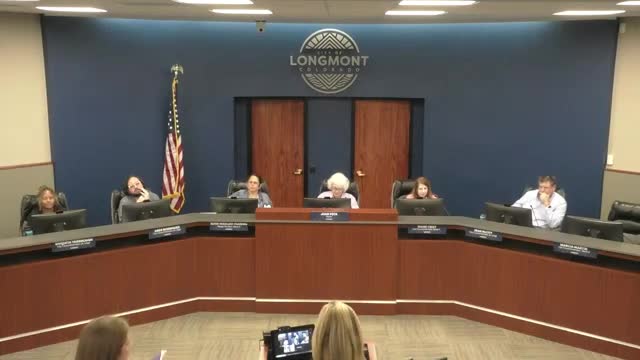Longmont launches ambitious transportation mobility plan
August 07, 2024 | Longmont, Boulder County, Colorado

This article was created by AI summarizing key points discussed. AI makes mistakes, so for full details and context, please refer to the video of the full meeting. Please report any errors so we can fix them. Report an error »

During a recent government meeting, Longmont officials provided updates on the city's Transportation Mobility Plan and the Vision Zero initiative, aimed at enhancing transportation safety and accessibility. Phil Greenwald, the transportation planning manager, introduced the new Vision Zero coordinator, Kemi Edson, who will oversee efforts to reduce traffic fatalities and serious injuries to zero by 2040.
The Transportation Mobility Plan is currently in its second phase, with public engagement ongoing through surveys and community feedback sessions. Over 1,000 points of engagement were recorded earlier this year, leading to draft recommendations that prioritize investments in walking, biking, and transit over increasing roadway capacity. The plan aims to create a comprehensive network for all modes of transportation, focusing on filling gaps in sidewalks and upgrading deficient infrastructure.
Carly Sief from the consulting firm Farrand Piers highlighted the importance of community input in shaping the recommendations, which include enhancing bike facilities and improving transit services. The city is also preparing to launch a microtransit service in September, designed to fill gaps in the existing public transportation system.
Kemi Edson emphasized the shift in transportation planning towards prioritizing pedestrian and cyclist safety, moving away from a focus solely on traffic volume. The Vision Zero initiative will implement a \"safe system\" model, which recognizes that while human errors are inevitable, the consequences can be mitigated through better infrastructure and safety measures.
The meeting concluded with discussions on the integration of the Transportation Mobility Plan and Vision Zero, ensuring that both initiatives work together to create a safer and more efficient transportation system for Longmont residents. The city plans to finalize the Transportation Mobility Plan by early 2025, with ongoing community engagement to refine the proposals.
The Transportation Mobility Plan is currently in its second phase, with public engagement ongoing through surveys and community feedback sessions. Over 1,000 points of engagement were recorded earlier this year, leading to draft recommendations that prioritize investments in walking, biking, and transit over increasing roadway capacity. The plan aims to create a comprehensive network for all modes of transportation, focusing on filling gaps in sidewalks and upgrading deficient infrastructure.
Carly Sief from the consulting firm Farrand Piers highlighted the importance of community input in shaping the recommendations, which include enhancing bike facilities and improving transit services. The city is also preparing to launch a microtransit service in September, designed to fill gaps in the existing public transportation system.
Kemi Edson emphasized the shift in transportation planning towards prioritizing pedestrian and cyclist safety, moving away from a focus solely on traffic volume. The Vision Zero initiative will implement a \"safe system\" model, which recognizes that while human errors are inevitable, the consequences can be mitigated through better infrastructure and safety measures.
The meeting concluded with discussions on the integration of the Transportation Mobility Plan and Vision Zero, ensuring that both initiatives work together to create a safer and more efficient transportation system for Longmont residents. The city plans to finalize the Transportation Mobility Plan by early 2025, with ongoing community engagement to refine the proposals.
View full meeting
This article is based on a recent meeting—watch the full video and explore the complete transcript for deeper insights into the discussion.
View full meeting
